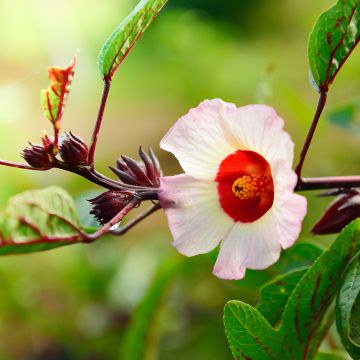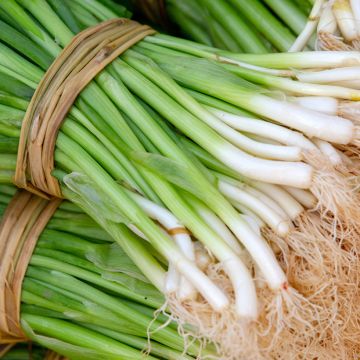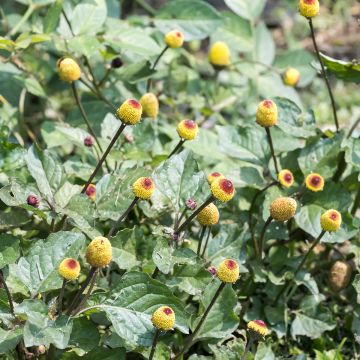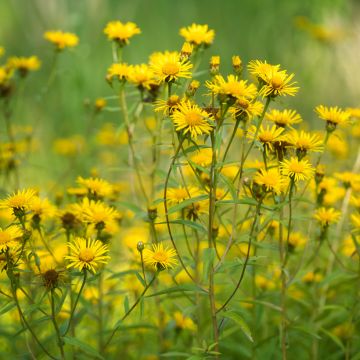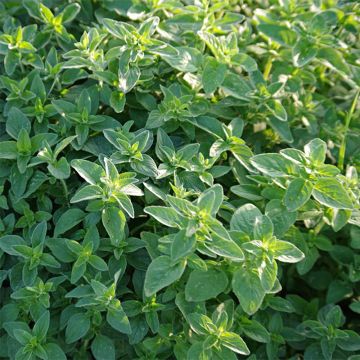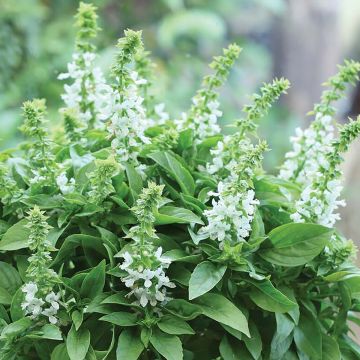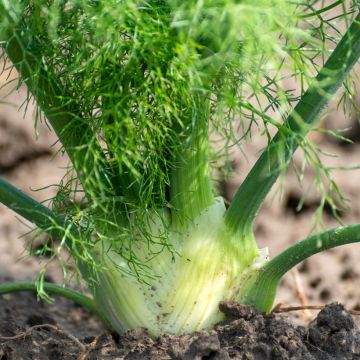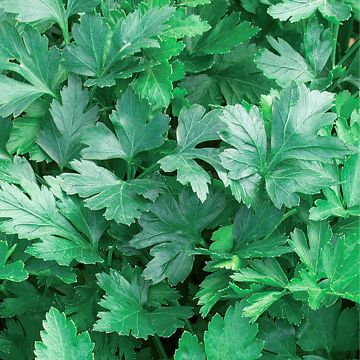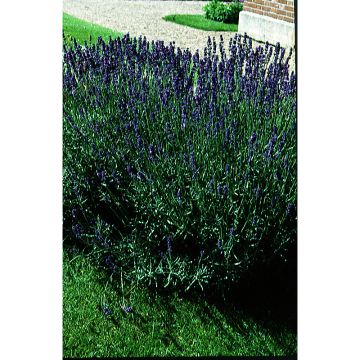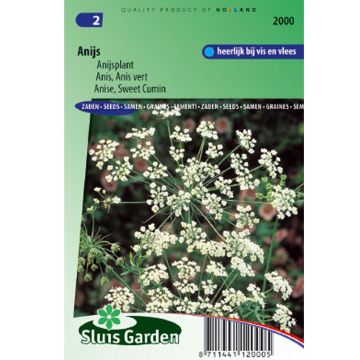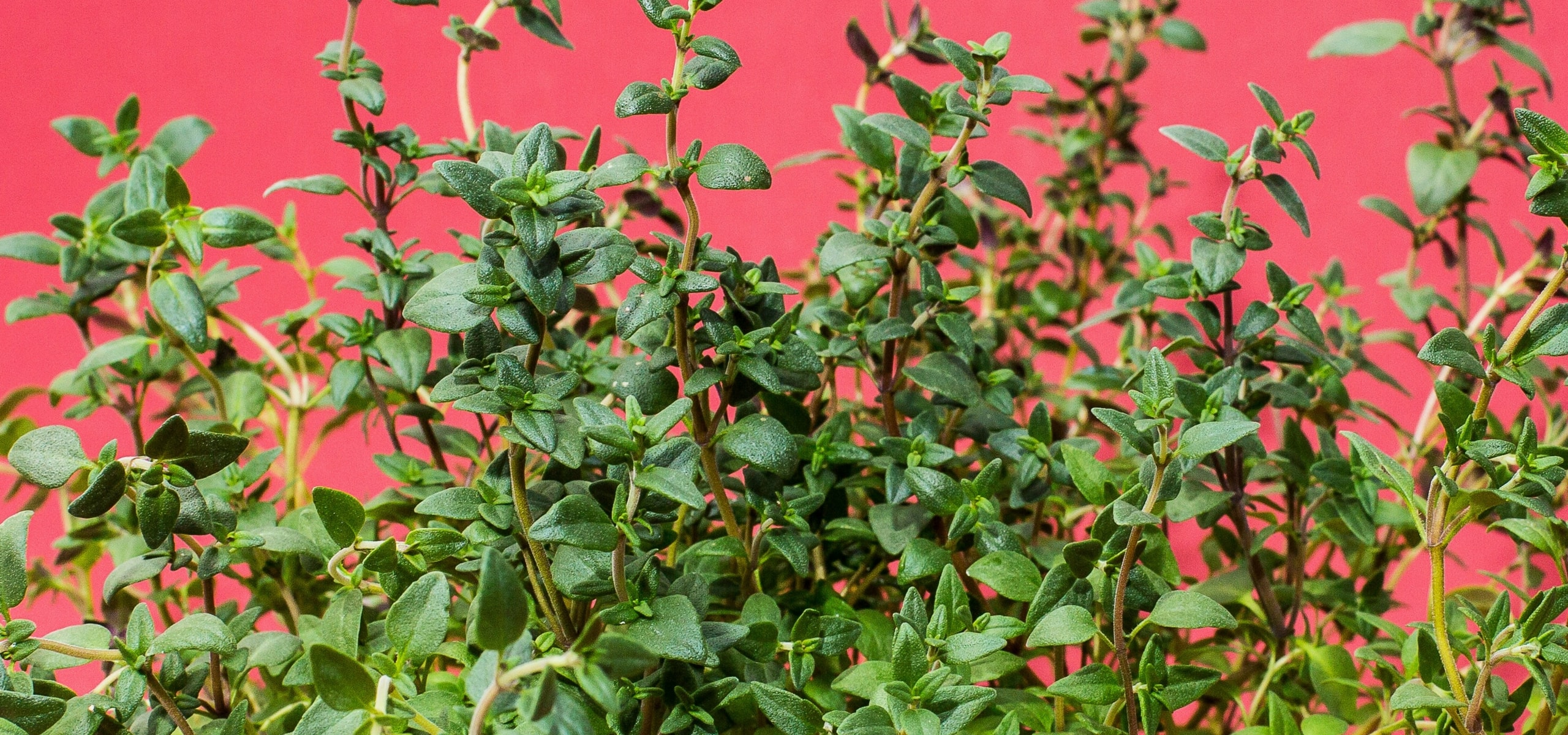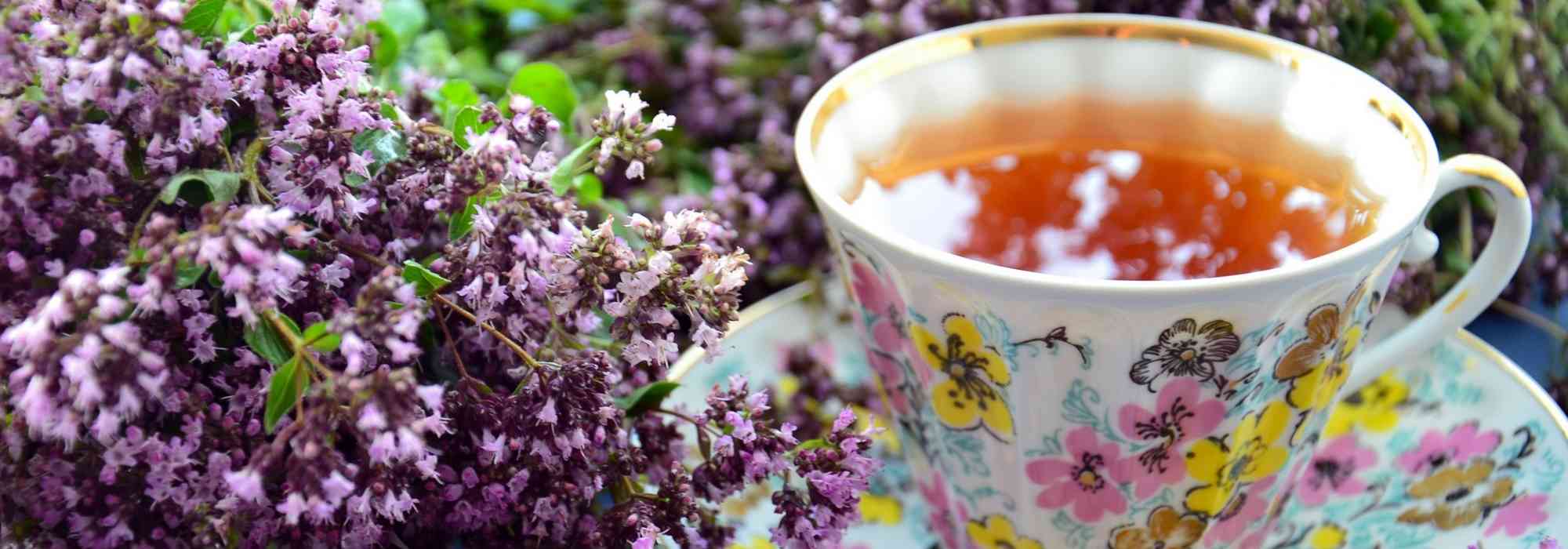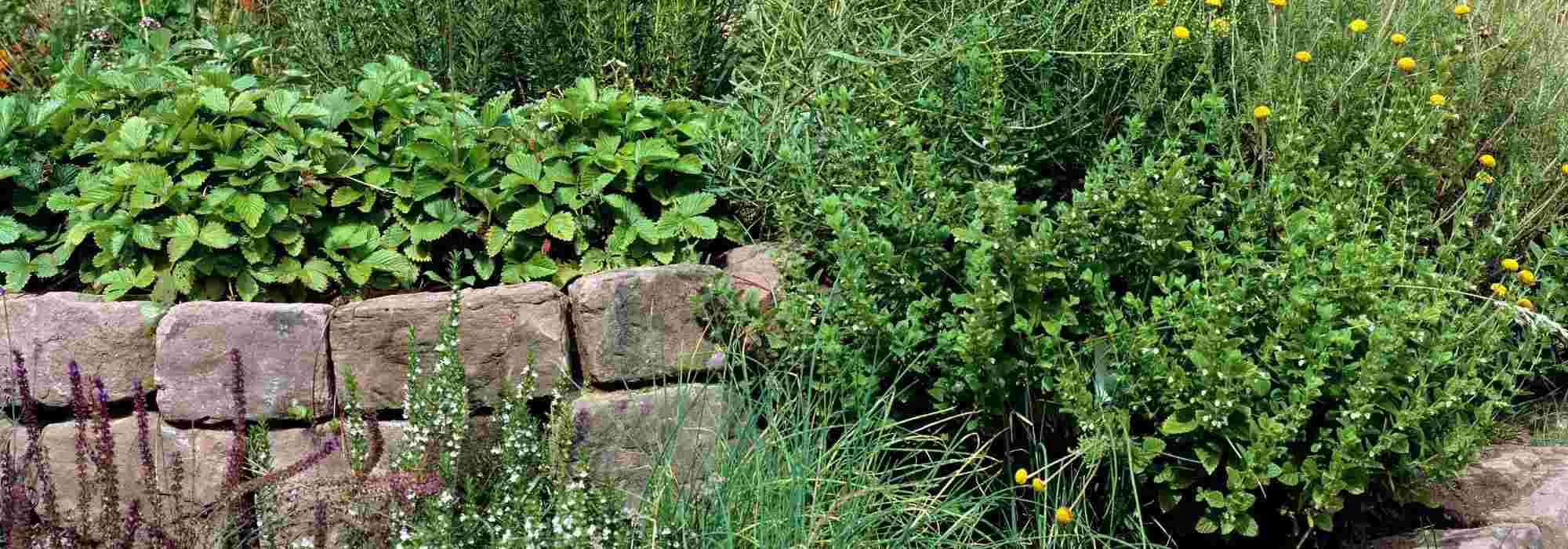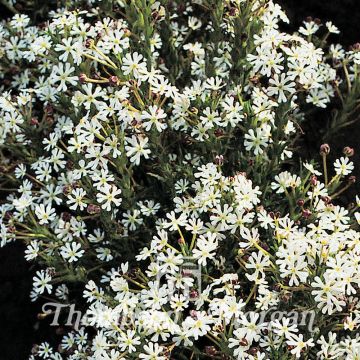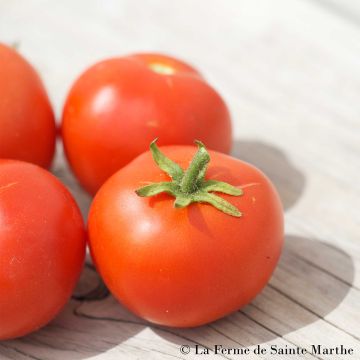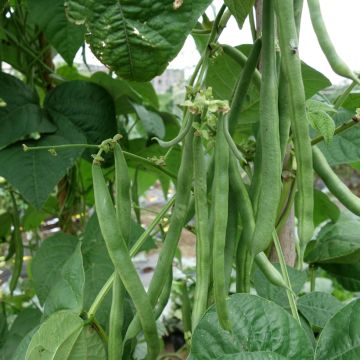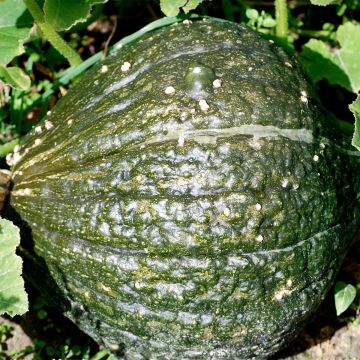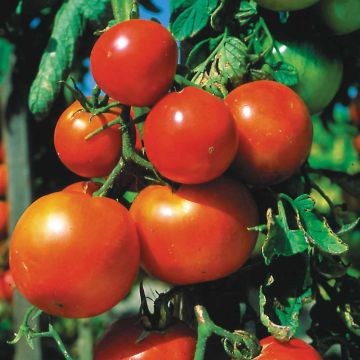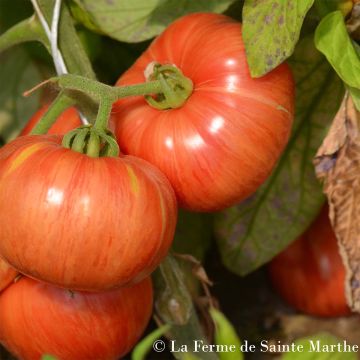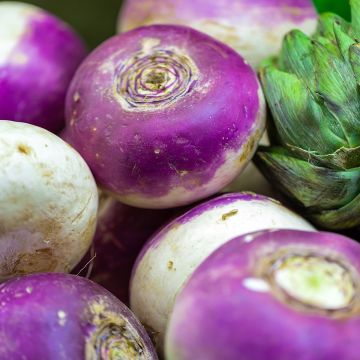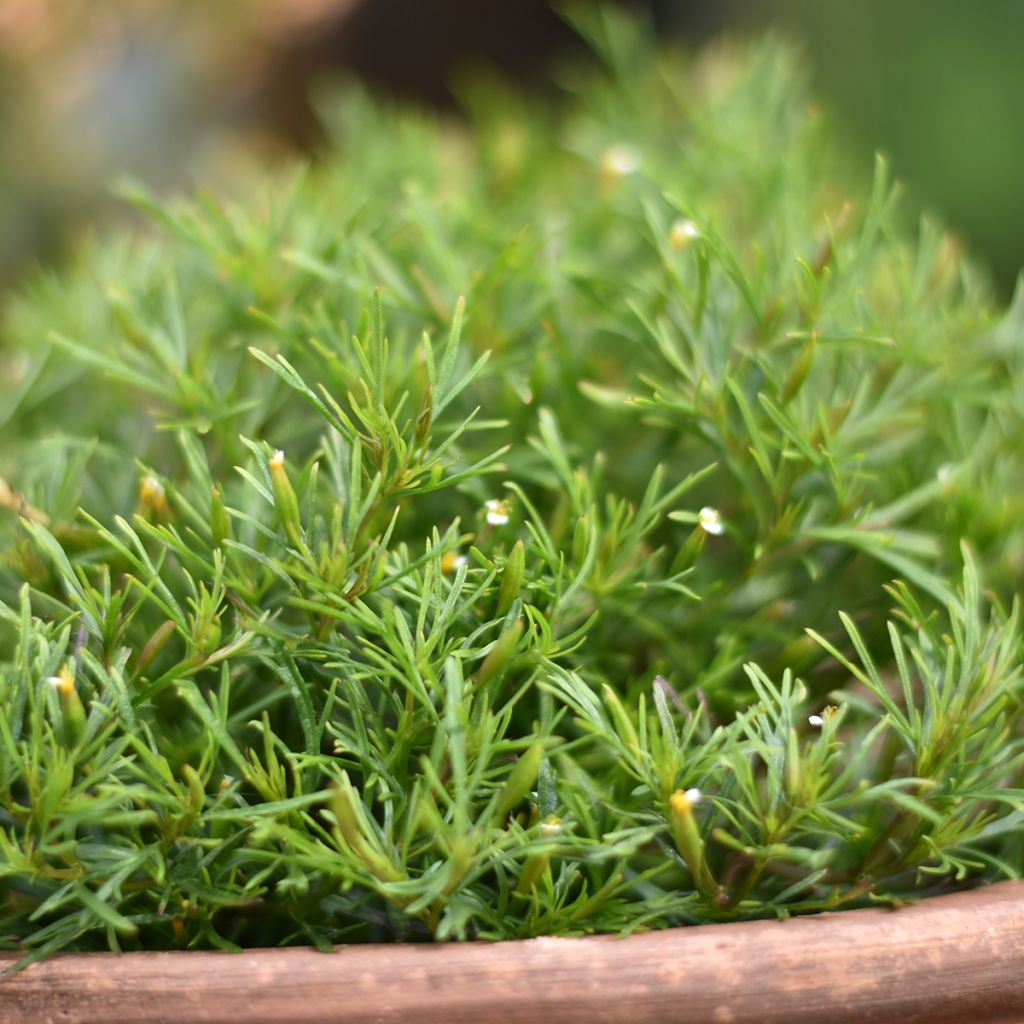

Tagetes filifolia Dropshot
Tagetes filifolia Dropshot
Tagetes filifolia Dropshot
Irish Lace, Threadleaf Tagetes
If you love aniseed flavor, it's fantastic—very fragrant, truly an amazing plant. Grows well, a great addition to the garden or terrace. Highly recommended!
gilbert, 25/07/2025
Special offer!
Receive a €20 voucher for any order over €90 (excluding delivery costs, credit notes, and plastic-free options)!
1- Add your favorite plants to your cart.
2- Once you have reached €90, confirm your order (you can even choose the delivery date!).
3- As soon as your order is shipped, you will receive an email containing your voucher code, valid for 3 months (90 days).
Your voucher is unique and can only be used once, for any order with a minimum value of €20, excluding delivery costs.
Can be combined with other current offers, non-divisible and non-refundable.
Home or relay delivery (depending on size and destination)
Schedule delivery date,
and select date in basket
This plant carries a 6 months recovery warranty
More information
We guarantee the quality of our plants for a full growing cycle, and will replace at our expense any plant that fails to recover under normal climatic and planting conditions.
Description
The Tagetes filifolia 'Dropshot' is a variety of annual liquorice carnation appreciated for its leaves with a pronounced taste of liquorice and anise. This aromatic characteristic makes it an interesting plant for cooking and use in infusions. The plant forms a small round clump that does not exceed 30 cm (12in) in height, with finely cut foliage of a lovely tender green color. It produces small white flowers in late summer. A fragrant carnation well suited for cultivation in pots or planters, to enjoy its benefits on a balcony or window sill.
The 'Dropshot' Tagetes grows easily in rich and moist soils. This annual tolerates full sun well, although hot exposures can give it a more pronounced and slightly bitter taste. Robust and resistant to diseases, it is easy to cultivate. In a herb garden, thanks to its small size and bushy habit, it finds its place at the foot of taller plants.
The Tagetes filifolia, more commonly known as liquorice carnation, marigold, or Irish lace, belongs to the family of asteraceae, like the French marigold and the African marigold. It is an annual herbaceous plant native to Central America, widespread in many regions with a temperate climate, from a large part of Latin America, from northern Mexico to Argentina. Among the Mayans of the high plateaus, Tagetes filifolia was mainly used to treat gastrointestinal problems and relieve fevers.
The 'Dropshot' variety is a selection of aromatic herb from the Hem Genetics Range (Netherlands). It forms a well-branched, globular-shaped plant, reaching a height of 15 to 25 cm (6 to 10in) in all directions. Its foliage is composed of delicate and tender leaves, of a beautiful shiny green colour, with a sweet liquorice taste. In August-September, tiny yellow flowers with a single white petal appear at the end of the stems.
The liquorice carnation is a plant that is both aromatic and medicinal. Only the leaves of this plant are edible, they have a liquorice taste in the mouth, followed by an aniseed note. In cooking, they are used to flavour soups and seafood, enhance the taste of fish and poultry dishes, enhance desserts, pastries, and fruit salads. In infusion, dried leaves retain their flavour and can be rehydrated.
Harvest: The leaves can be harvested from July to September, provided that the plants are sufficiently developed. It is recommended not to take more than a third of the branches to allow the plant to continue to grow. This harvesting method allows for multiple harvests before the liquorice carnation blooms.
Storage: Once harvested, the leaves of the liquorice carnation can be dried for storage. The quality of the product will depend on the quality of the drying. Regardless of the method, it should be done away from direct light (so not in direct sunlight), at a temperature below 40°C (104°F). Place the leaves so that they do not overlap to ensure even drying. Dry until the leaves are completely crumbly.
The gardener's little tip: Due to the relative insignificance of its flowers, it is preferable to cultivate 'Dropshot' as an aromatic herb for the summer. For this, it is recommended to regularly prune the plant to obtain fresh and fragrant leaves, ideal for cooking.
Report an error about the product description
Harvest
Plant habit
Foliage
Botanical data
Tagetes
filifolia
Dropshot
Asteraceae
Irish Lace, Threadleaf Tagetes
Cultivar or hybrid
Annual
Other Herb seeds
View all →Planting and care
Sowing: The germination of the Liquorice Carnation occurs at a temperature of around 18°C (64.4°F). The emergence takes place between 7 and 21 days. The seeds have excellent germination capacity, which allows even amateur gardeners to succeed in their cultivation.
From March, indoors, on a warm windowsill or in a greenhouse, in a tray with drainage holes and filled with a special sowing compost. The sowing must be protected from bad weather and attacks by slugs. Do not cover the seeds because they need light to germinate. Keep the sowing tray moist by watering with a very fine spray, using a sprayer. The first shoots usually appear in one to two weeks after sowing. When your young plants have 5 to 6 leaves (about 7 to 10 cm (3 to 4in) tall), transplant them into a pot that you will install in the garden when the risk of frost has passed and temperatures exceed 15°C (59°F).
From May, after the last frost, sowing marigolds can be done directly in open ground. In most cases, slug protection is necessary, as these pests are fond of young seedlings. When sowing in place, make sure to only lightly cover the seeds that need light to germinate and keep the soil moist. Thin out the sowing to keep only one plant every 25 to 30 cm (10 to 12in).
Cultivation: Liquorice Carnation is cultivated in sunny, rich, light and well-drained soil. If compost is needed, it should preferably be applied in autumn, in the form of very mature compost (no manure), by digging to a depth of 5 cm (2in), after loosening the soil as for any vegetable cultivation.
When planting in the garden, space the plants 30 to 40 cm (12 to 16in) apart.
Seedlings
Care
Intended location
Planting & care advice
-
, onOrder confirmed
Reply from on Promesse de fleurs
Similar products
Haven't found what you were looking for?
Hardiness is the lowest winter temperature a plant can endure without suffering serious damage or even dying. However, hardiness is affected by location (a sheltered area, such as a patio), protection (winter cover) and soil type (hardiness is improved by well-drained soil).

Photo Sharing Terms & Conditions
In order to encourage gardeners to interact and share their experiences, Promesse de fleurs offers various media enabling content to be uploaded onto its Site - in particular via the ‘Photo sharing’ module.
The User agrees to refrain from:
- Posting any content that is illegal, prejudicial, insulting, racist, inciteful to hatred, revisionist, contrary to public decency, that infringes on privacy or on the privacy rights of third parties, in particular the publicity rights of persons and goods, intellectual property rights, or the right to privacy.
- Submitting content on behalf of a third party;
- Impersonate the identity of a third party and/or publish any personal information about a third party;
In general, the User undertakes to refrain from any unethical behaviour.
All Content (in particular text, comments, files, images, photos, videos, creative works, etc.), which may be subject to property or intellectual property rights, image or other private rights, shall remain the property of the User, subject to the limited rights granted by the terms of the licence granted by Promesse de fleurs as stated below. Users are at liberty to publish or not to publish such Content on the Site, notably via the ‘Photo Sharing’ facility, and accept that this Content shall be made public and freely accessible, notably on the Internet.
Users further acknowledge, undertake to have ,and guarantee that they hold all necessary rights and permissions to publish such material on the Site, in particular with regard to the legislation in force pertaining to any privacy, property, intellectual property, image, or contractual rights, or rights of any other nature. By publishing such Content on the Site, Users acknowledge accepting full liability as publishers of the Content within the meaning of the law, and grant Promesse de fleurs, free of charge, an inclusive, worldwide licence for the said Content for the entire duration of its publication, including all reproduction, representation, up/downloading, displaying, performing, transmission, and storage rights.
Users also grant permission for their name to be linked to the Content and accept that this link may not always be made available.
By engaging in posting material, Users consent to their Content becoming automatically accessible on the Internet, in particular on other sites and/or blogs and/or web pages of the Promesse de fleurs site, including in particular social pages and the Promesse de fleurs catalogue.
Users may secure the removal of entrusted content free of charge by issuing a simple request via our contact form.
The flowering period indicated on our website applies to countries and regions located in USDA zone 8 (France, the United Kingdom, Ireland, the Netherlands, etc.)
It will vary according to where you live:
- In zones 9 to 10 (Italy, Spain, Greece, etc.), flowering will occur about 2 to 4 weeks earlier.
- In zones 6 to 7 (Germany, Poland, Slovenia, and lower mountainous regions), flowering will be delayed by 2 to 3 weeks.
- In zone 5 (Central Europe, Scandinavia), blooming will be delayed by 3 to 5 weeks.
In temperate climates, pruning of spring-flowering shrubs (forsythia, spireas, etc.) should be done just after flowering.
Pruning of summer-flowering shrubs (Indian Lilac, Perovskia, etc.) can be done in winter or spring.
In cold regions as well as with frost-sensitive plants, avoid pruning too early when severe frosts may still occur.
The planting period indicated on our website applies to countries and regions located in USDA zone 8 (France, United Kingdom, Ireland, Netherlands).
It will vary according to where you live:
- In Mediterranean zones (Marseille, Madrid, Milan, etc.), autumn and winter are the best planting periods.
- In continental zones (Strasbourg, Munich, Vienna, etc.), delay planting by 2 to 3 weeks in spring and bring it forward by 2 to 4 weeks in autumn.
- In mountainous regions (the Alps, Pyrenees, Carpathians, etc.), it is best to plant in late spring (May-June) or late summer (August-September).
The harvesting period indicated on our website applies to countries and regions in USDA zone 8 (France, England, Ireland, the Netherlands).
In colder areas (Scandinavia, Poland, Austria...) fruit and vegetable harvests are likely to be delayed by 3-4 weeks.
In warmer areas (Italy, Spain, Greece, etc.), harvesting will probably take place earlier, depending on weather conditions.
The sowing periods indicated on our website apply to countries and regions within USDA Zone 8 (France, UK, Ireland, Netherlands).
In colder areas (Scandinavia, Poland, Austria...), delay any outdoor sowing by 3-4 weeks, or sow under glass.
In warmer climes (Italy, Spain, Greece, etc.), bring outdoor sowing forward by a few weeks.






























